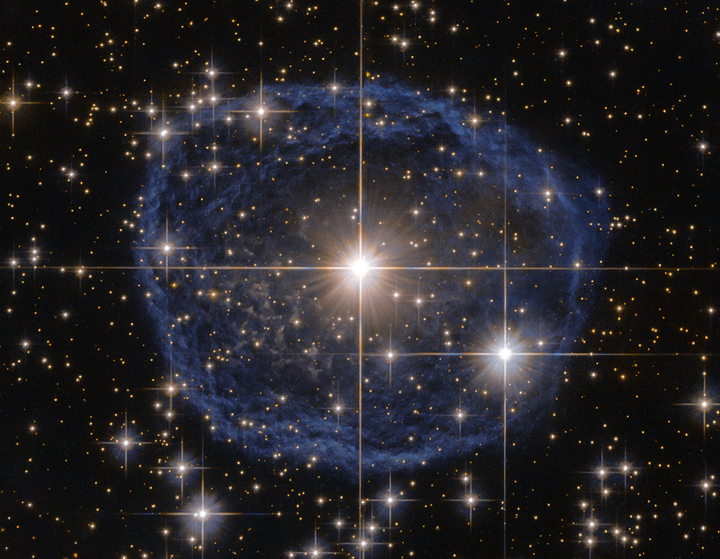The death of a star has never been so beautiful.

Astronomers from NASA and the European Space Agency (ESA) imaged this beautiful Wolf-Rayet star — known as WR 31a — using the Hubble Space Telescope.
READ MORE: 25 years of Hubble — 5 amazing things it has taught us about our universe
Wolf-Rayet stars are at least 20 times more massive than our own sun and have a short lifespan, about a few hundred thousand years (that’s young in astronomical terms!). The adage “live fast and die young” can be best applied to these large, bright stars.

Get breaking National news
Before they die, however, Wolf-Rayet stars expel an interstellar cloud of gases (mainly hydrogen and helium, as well as other gases). When the stellar wind interacts with the hydrogen that’s been ejected, it creates a beautiful ringed nebula, by definition, a cloud.
On the plus side, out of death comes birth: This interstellar dust cloud will one day create stars and planets.
WR 31a is 30,000 light-years from Earth and can be found in the constellation Carina. It is invisible to the unaided eye.
To see a high-res image, click here.








Comments